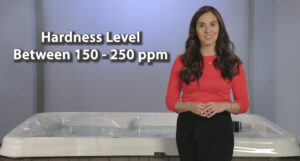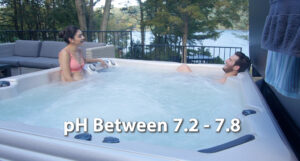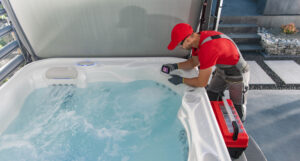Chemicals
Find the answers to all of your questions about Hot Tub and Swim Spa Chemical usage.
To lower the alkalinity first make sure the pumps are off and the water is calm. Then premix one ounce […]
Read MoreTo lower your pH first premix a ½ ounce of HT pH/Alkalinity Decreaser in a small bucket of spa water. […]
Read MoreTo raise your pH or alkalinity first turn off all the jets. If your pH is reading between 6.8 and […]
Read MoreThe pH level in spa water should always be between 7.2 and 7.8 and the alkalinity level should be between […]
Read MoreThe best time to test and correct the hardness in your water is when you fill the spa and the […]
Read MoreUsing HT Liquid Calcium is the easiest way to raise the hardness level in your hot tub. To raise the […]
Read MoreScaling is a precipitation that occurs in hot tubs, like barnacles on the hull of a boat. It happens when […]
Read MoreThere are no chemical products available to lower your calcium level. Either, run your fill water through a water softener […]
Read MoreWait 2 to 3 days and retest since Liquid Calcium takes a long while to fully dilute in the water, […]
Read MoreThe simple answer is the temperature of the water. Because Calcium is less soluble in cool water is the reason […]
Read MoreThe hardness of your water is determined by the calcium level. If the calcium is too high, it could cause […]
Read MoreChlorine prefers a lower pH level (7.2 to 7.5) where bromine works equally well throughout the entire range of 7.2 […]
Read MoreDrain 6 to 12” of water from your spa, refill, and retest.
Read MoreIf pH is below 8.0 you should not make any further adjustments. If pH is above 8.0 add “HT pH/Alkalinity […]
Read MoreIf pH is 7.0 or higher you should not make any further adjustments since many occurrences naturally raise pH along […]
Read MoreThere are many reasons pH and Alkalinity fluctuates: People using the spa, chemicals being added, are just some of the […]
Read MoreAlkalinity is the buffering agent in the water to help prevent rapid fluctuations in pH.
Read MoreThe pH is the acidic level of your water which should be kept between 7.2 to 7.8. Though it may […]
Read MoreIf pH is too high, you can get scaling in your water which could damage your acrylic surface. If pH […]
Read MoreYour pH should be kept between 7.2 – 7.8, the ideal alkalinity level is between 80-150 ppm, and calcium hardness […]
Read More- « Previous
- 1
- 2










